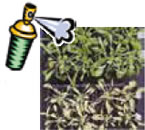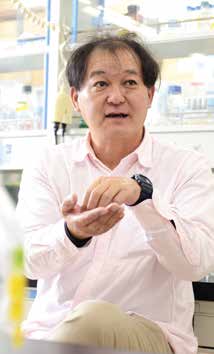Research Area : Plant Pathology
Unrabeling plant disease susceptibility to fungal pathogens
Multi-layered defense barriers ensure that a plant is the host to only a few adapted pathogens. Thus, the host range of a particular plant pathogen relies on its ability to fully suppress plant defense responses such as the pattern-triggered immunity (PTI). One of the common pathogen strategies to overcome PTI is the production of a plant defense suppressor. In the case of Mycosphaerella pinodes, a causal agent of Mycosphaerella blight on pea, this fungus can avoid host defense responses by secreting at least two suppressors named supprescins A and B (Fig. 1), which manipulate the physiology of the host cells, including JA biosynthesis through targeting the host’s ATPase. In parallel, a constituent(s) similar to the fungal supprescins has been discovered in healthy leaves of pea. Such a constituent was also found in the healthy leaves of barley and Arabidopsis plants, and collectively referred to as an endogenous suppressor (ES). Actually, the purified ES can suppress or delay PTI, enabling the non-adapted pathogen to cause disease symptom on corresponding plants. Interestingly, the action of the pea ES is quite similar to that of the supprescins A and B secreted by M. pinodes. Consistently, the ES can severely inhibit host’s ATPase, temporarily reducing the ability of the host cell to defend itself. The putative role of the ES is assumed to be involved in the trade-offs between plant growth and defense by preventing excessive defense responses against pathogen attack. Alternatively, it is likely used by a pathogen to promote disease susceptibility. We are now focusing on the host cell physiology altered by a pathogen- and/or plant-derived suppressors in relation to the convergent evolution between pathogen and host.
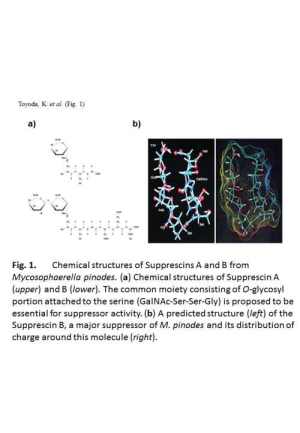
For the control of crop diseases caused by a fungal pathogen Rhizoctonia solani
Rhizoctonia solani is a soil-borne fungal phytopathogen causing rice sheath blight as well as seedling damping-off or root rot in various crops. Management of this pest is difficult and it gives rise to serious damage in agriculture and economies. An experimental pathosystem using Brachypodium distachyon, an emerging model plant, revealed plant immunity mechanism against this pathogen leading to a novel insight into the fungal infection strategy. Fungal proteinaceous weapons called effectors are now being investigated.
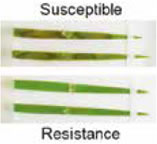
Molecular basis of a biological control agent for crown gall disease in grapevine
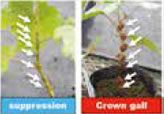
Grape is one of the major fruits produced in Okayama. It suffers serious damage from grown gall disease which is caused by Rhizobium vitis Ti strain. A non-pathogenic strains of R. vitis have been isolated as biological control of this pest. The molecular mechanism underlying this suppression activity is investigating and we found a potential causal substance produced by this biocontrol agent.
Isolation and characterization of plant defense activators for sustainable agriculture
Plant defense activators exhibit cop protection activity by priming or inducing plant immune response. We established a quantitative assay method for plant defense response and identified potential compounds through a high-throughput screening of several commercial libraries of organic small molecules as well as a laboratory-made small cyclic peptides. They can be used for not only lead compounds to develop agrochemicals but also molecular probe to understand plant immunity.
